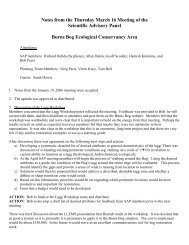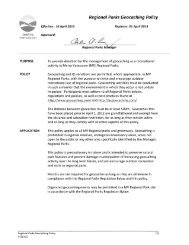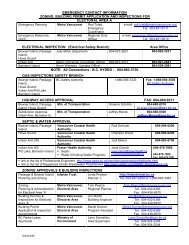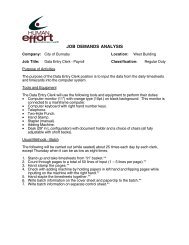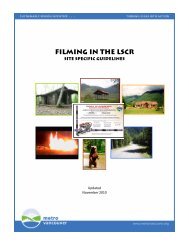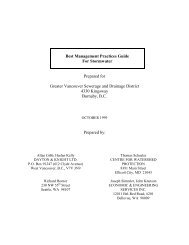Chlorine Monitoring and Dechlorination Techniques Handbook
Chlorine Monitoring and Dechlorination Techniques Handbook
Chlorine Monitoring and Dechlorination Techniques Handbook
You also want an ePaper? Increase the reach of your titles
YUMPU automatically turns print PDFs into web optimized ePapers that Google loves.
6.1.1 Steps<br />
<strong>Chlorine</strong> <strong>Monitoring</strong> <strong>and</strong> Dechlorinating <strong>Techniques</strong> H<strong>and</strong>book<br />
Step 1 - Prepare for the situation. Ensure there is excess dechlorinating agent on-site.<br />
Step 2 - Measure the TRC. Use a field testing kit to do so. In this case, we will assume<br />
that the field testing kit indicated a TRC of 0.5 mg/L.<br />
Step 3 - Record all of the activities during this situation. Use the record of activities<br />
sheet attached, or keep a record book.<br />
Step 4 - Prepare the stock solution. Refer to Table 3-3. To prepare a 2% stock solution<br />
of sodium thiosulphate pentahydrate, one will need 20.3 grams of<br />
dechlorinating agent per litre of water or 92.4 grams per gallon of water,<br />
therefore to calculate how much would be needed to make a 45 gallon drum:<br />
92.4 grams/gallon x 45 gallons = 4,158 grams or 4.2 kg,<br />
where there are 1,000 grams in a kilogram.<br />
Step 5 - Determine the flow rate of water. Using Table 3-4 <strong>and</strong> assuming a flow<br />
velocity of 1.8 m/s, one notes that an 8" or 20 cm pipe has a typical flow rate<br />
of 59 LPS (litres per second). To determine the volume of water that would<br />
be discharged after 30 minutes, apply the following:<br />
59 L/s * 60 s/minute * 30 minutes total = 106,200 L or 23,340 gallons 7<br />
Step 6 - Determine the dosing rate. Using Table 3-5 for a 2% solution of sodium<br />
thiosulphate pentahydrate, <strong>and</strong> cross-referencing the TRC at 0.5 mg/L, one<br />
would need 354 mL of stock solution for every 10,000 litres of discharge<br />
water. Since the water is flowing at a rate of 59 LPS, the dosing rate would<br />
be:<br />
(354 mL/10,000 L) * 59 L/s = 2.09 mL of dechlorinating agent per second or,<br />
2.09 mL/second * 60 seconds/minute = 125.3 mL/minute<br />
Step 7 - Add the dechlorinating agent by using a chemical metering pump. The<br />
chemical metering pump can be attached to a 45 gallon/204 litre drum. An<br />
example of this set-up is shown in Figure 4-1. As in Figure 4-1, the<br />
7<br />
Remember that 1 litre = 4.55 gallons.<br />
Page 40




